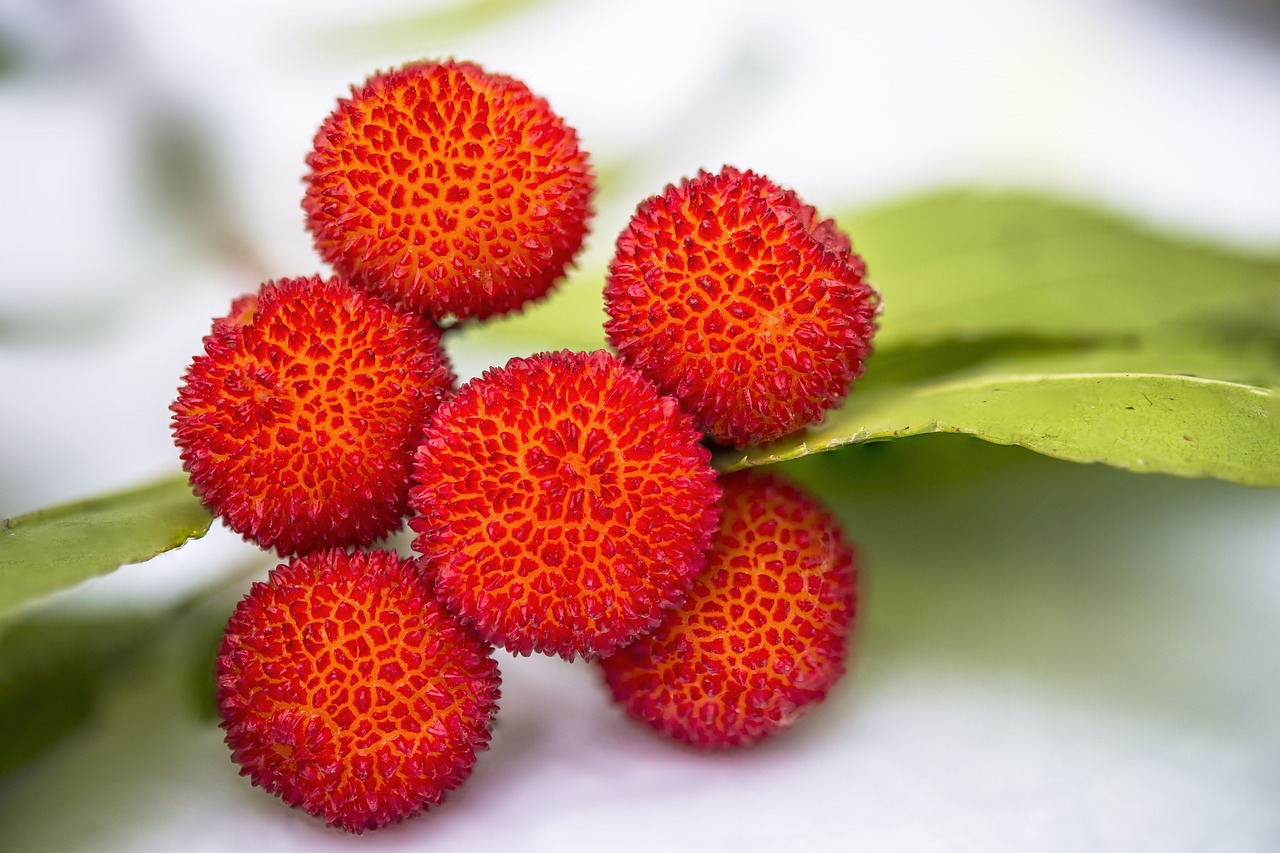Strawberry Tree: Features and Care

The strawberry tree is an evergreen tree native to the Mediterranean region and parts of Western Europe. True to its name, its ripe fruits resemble strawberries, making it a unique and attractive plant. With its beautiful flowers and vivid fruits that can appear simultaneously, it is popular as both an ornamental and a garden tree.
This article delves into the basic information about the strawberry tree, its cultural and historical significance, and practical tips for cultivation.
Basic Information
- Scientific Name: Arbutus unedo
- Family: Ericaceae
- Origin: Mediterranean basin, Western Europe
- Appearance: The strawberry tree is an evergreen tree that can grow between 5 to 10 meters tall. It has glossy, dark green leaves and produces small white or pale pink urn-shaped flowers from autumn to winter. During the same period, bright red, round, and bumpy fruits resembling strawberries ripen, adding to its visual appeal.
- Blooming Season: Autumn to winter
- Fruit Maturation Season: Winter to early spring
Cultural Significance Around the World

The strawberry tree holds deep cultural roots in the Mediterranean region, particularly in Spain and Portugal. It is widely cultivated as a garden tree, and its importance is highlighted in Madrid, Spain, where the city’s coat of arms features the tree, symbolizing its connection to the area. In Portugal, the fruits are famously distilled into a traditional spirit called “Medronho,” making the tree a cultural icon.
The tree’s resilience and striking appearance also made it a symbol of “endurance” and “immortality” in ancient Roman and Greek cultures. It was not only planted in gardens and parks but also used in temple decorations and religious ceremonies, reflecting its significance in historical traditions.
Historical Episodes
The strawberry tree has a long history, with its fruits used in ancient Rome as both food and offerings. Interestingly, the Latin name unum edo (“I eat one”) reflects the notion that the fruits, while edible, have a distinct taste that often satisfies after just one bite.
During medieval Europe, the strawberry tree became a popular addition to gardens, including those of monasteries and aristocratic estates. Its hard and durable wood was also used historically for crafting furniture and decorative items, showcasing its versatility and value in daily life.
Gardening Advice

The strawberry tree is relatively easy to care for and adapts well to various environments. Follow these guidelines to cultivate it successfully:
Light
Prefers full sun but can also grow in partial shade. Adequate sunlight is essential for fruit production.
Watering
During the growing season, provide moderate watering, allowing the soil to dry out slightly between sessions. The tree is drought-tolerant, so overwatering should be avoided.
Soil
Thrives in well-draining soil. Acidic to neutral soil is ideal, and adding compost or organic matter during planting helps improve soil quality.
Pruning
Prune as needed to shape the tree and control its growth. The best time for pruning is after flowering or fruiting.
Fertilization
Apply slow-release fertilizer once or twice a year to encourage healthy flowering and fruiting. Fertilizing during the growing season is most effective.
Cold Tolerance
While the tree is relatively hardy, it may need protection from frost in regions with severe winters. Use frost covers to maintain its health during colder months.
Conclusion
The strawberry tree is a captivating plant that offers year-round interest with its charming flowers and colorful fruits. Its rich cultural heritage in the Mediterranean region and its symbolic meanings add depth to its appeal.
Whether as a decorative element in the garden or as a practical plant for its fruits, the strawberry tree makes a delightful addition to any space. Consider incorporating this versatile tree into your garden or balcony to enjoy its unique beauty.




